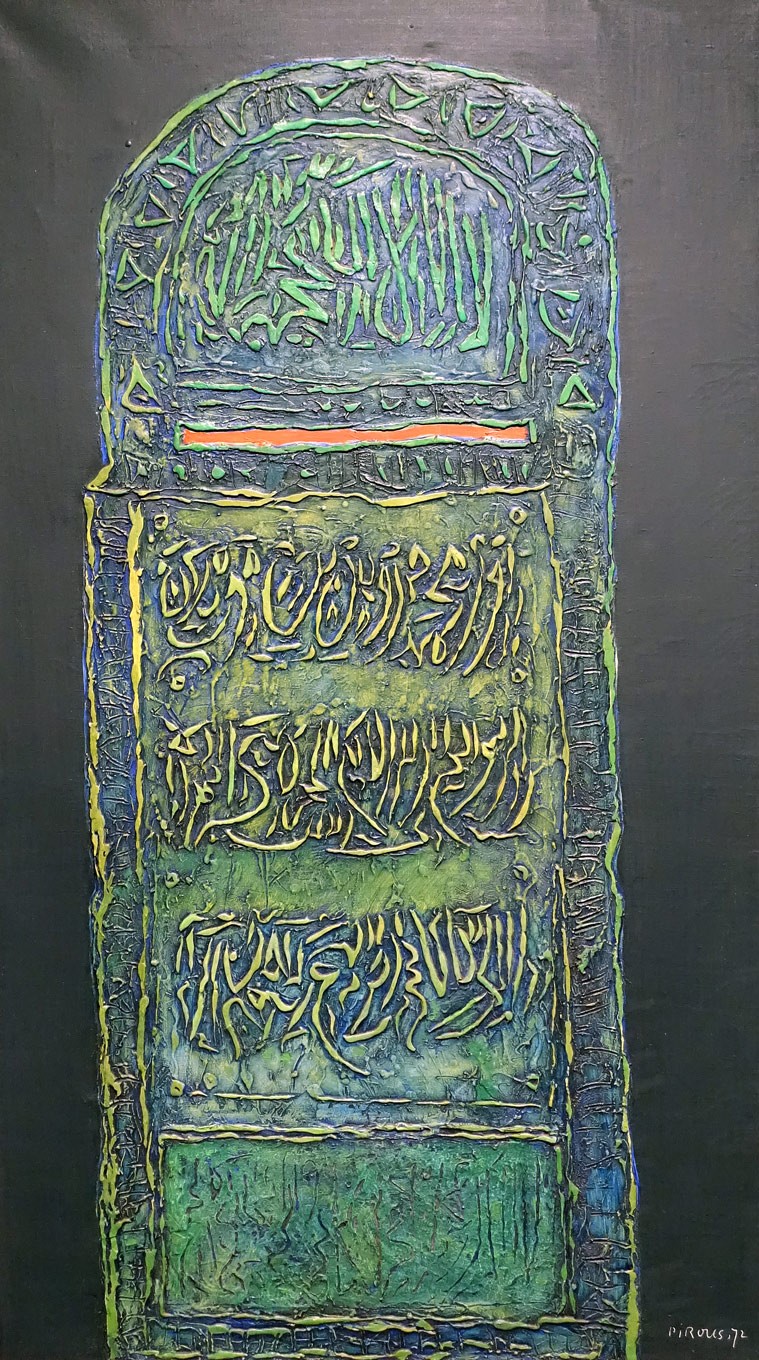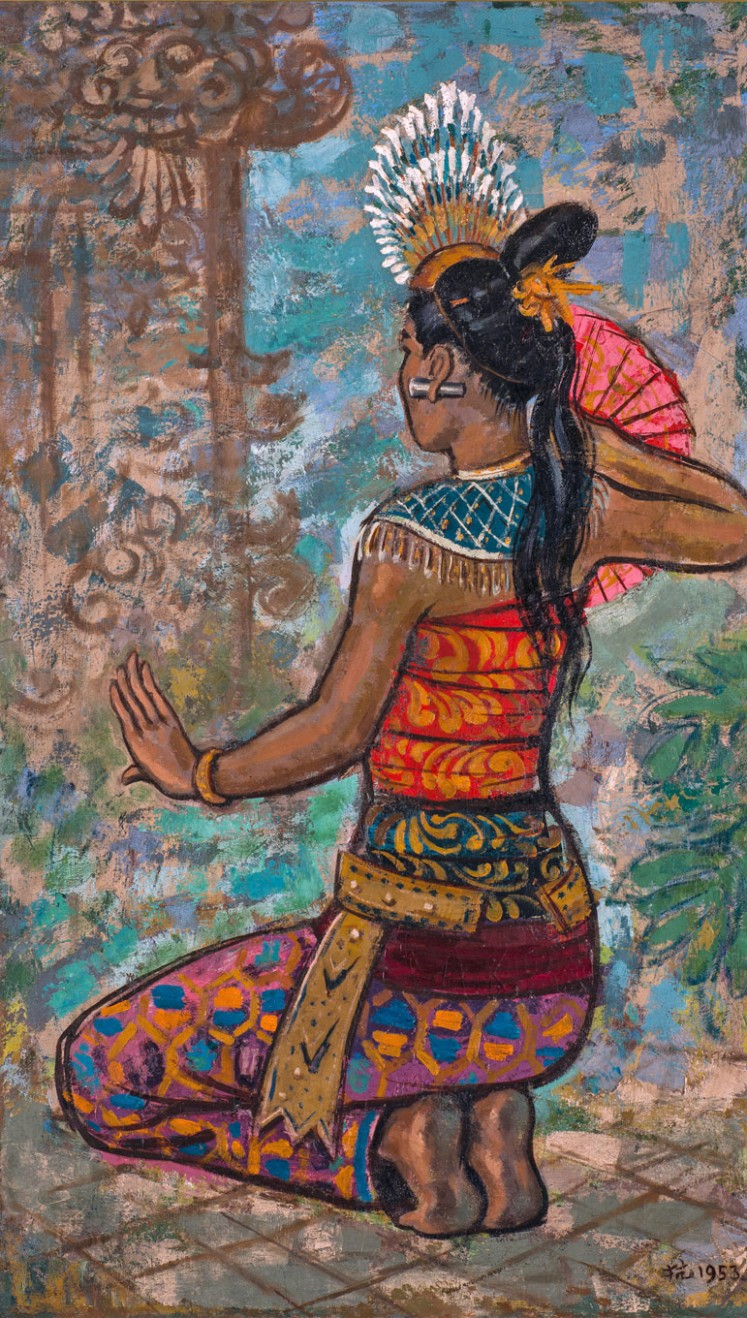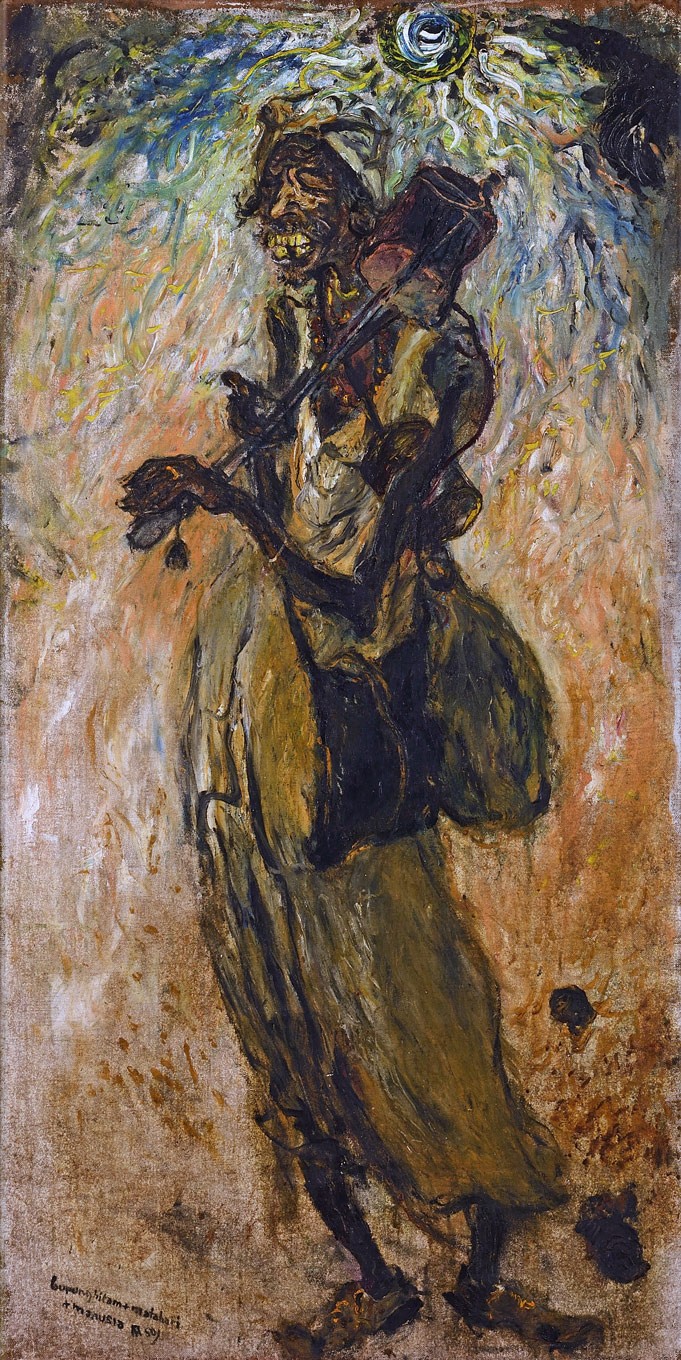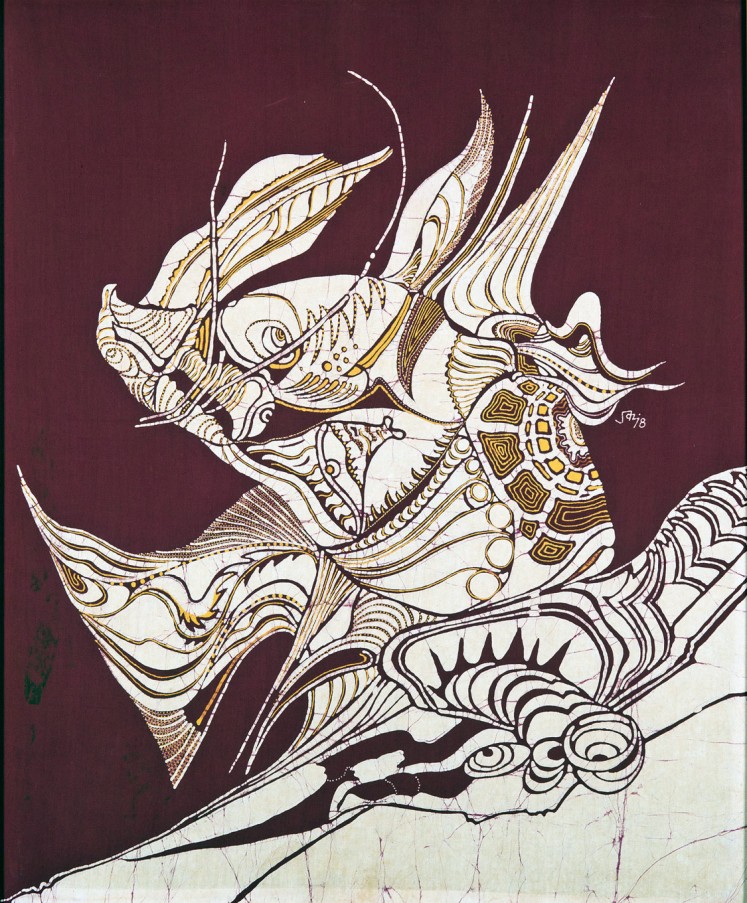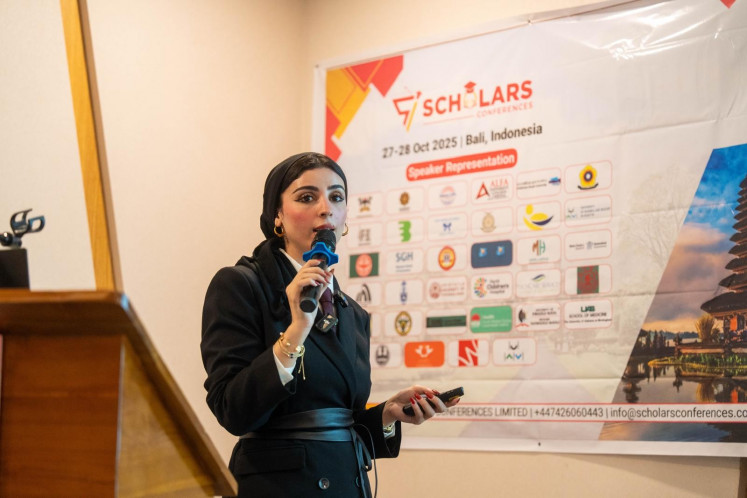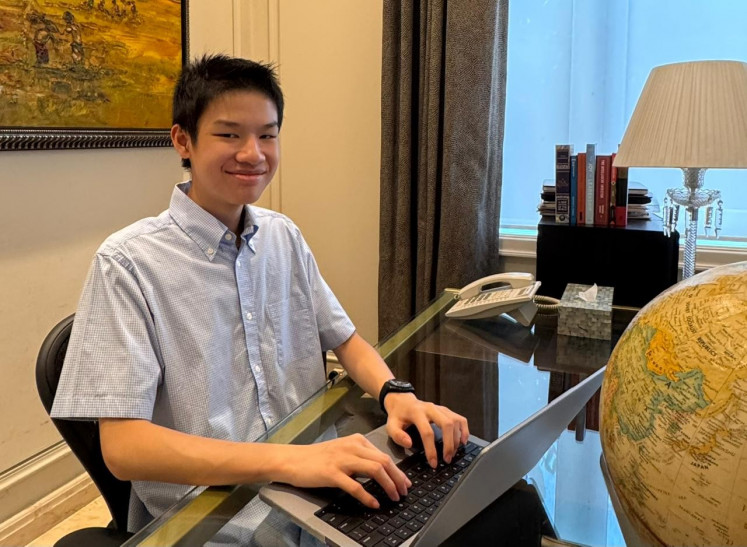Popular Reads
Top Results
Can't find what you're looking for?
View all search resultsPopular Reads
Top Results
Can't find what you're looking for?
View all search resultsTour showcases shared art history of Indonesia and Singapore
The relationship between Indonesia and Singapore does not only involve trade, commerce and tourism, but also a shared history in art.
Change text size
Gift Premium Articles
to Anyone
A
s part of celebrations marking diplomatic relations between Indonesia and Singapore, the National Gallery Singapore created an audio tour accessible through their Gallery Explorer mobile app.
The app, available for download in the Google Play Store and App Store for Android and iOS users, respectively, serves as a general guide to the gallery.
The audio guide, titled “Masters Across Indonesia and Singapore”, is intended to accompany visitors as they walk and observe the artworks.
The gallery’s curator Seng Yu Jin told The Jakarta Post that while the exhibition itself was not new, the audio tour offered another way of presenting the shared art history of both nations.
“[The audio tour] presents a different layer of understanding in much more depth the relationship between Indonesian and Singaporean artists,” Yu Jin said, adding that the artists featured in the exhibition knew each other personally.
The audiovisual tour takes about 45 minutes to complete, with 10 stops covering seven artists both Indonesian and Singaporean, spanning two galleries, namely the UOB Southeast Asia and the DBS Singapore Galleries.
App users do not have to be at the gallery in person to enjoy the artworks as images are provided for each piece.
However, Yu Jin said the audio tour itself enhanced the experience of seeing the artworks in person, as opposed to a replacement for a gallery visit.
“[...] It works when you see the physical art itself in front of you, as there’s only so much you can see on a screen. It is much more immersive when you can also see the art surrounding you as well,” he said, noting that viewing artworks by artists from neighboring countries is also essential to a gallery visit.
As one starts the tour, an introduction briefly touches on the history between both nations, which once belonged to the Sriwijaya Kingdom from the seventh to the 13th century.
The first artwork on the tour is Basuki Abdullah’s Sunset. The painting depicts the idyllic view of rice fields in the glow of twilight, a calming sense of peace as the day ends. The Surakarta-born artist, known for his portraits of historical figures, came to Singapore in the 1950s, acting as a mentor of sorts to local artists, especially Malay ones.
Souri by Liu Kang (National Gallery of Singapore/File)Another artwork in the tour is Affandi’s Burung Hitam, Matahari, Manusia (Black Bird, Sun, Man), which he had completed during his study in India’s Santiniketan University.
Affandi’s expressionist signature is present in the piece, with the Indian climate represented by swirling lines in warm colors. The audio guide suggests the artwork represents humanity’s struggle with life and death, as the sun is a recurring motif in Affandi’s works and the black bird is a symbol of death.
Meanwhile, S. Soedjojono’s Kami Present, Ibu Pertiwi (Stand Guard for Our Motherland) depicts a scene of Indonesian soldiers at a stronghold, some working while others are on break.
Sudjojono once came to Singapore to pursue his dreams of making it in Paris. However, he met many Indonesian intellectuals and activists during his time in Singapore, who convinced him to return to Indonesia to guide the country’s burgeoning arts scene.
The audio guide also mentioned Sudjojono’s criticism of Mooi Indië (Beautiful Indies) artists, known for their idealized paintings of the Indonesian landscape. According to Sudjojono, Indonesian artists should paint the realities of what they saw, instead of exotic sceneries catering to foreign tastes.
An interlude in the tour presents itself as attendees move between galleries muse on how the artists discovered more about themselves as they traveled out of their own countries, perhaps acknowledging that one would need to broaden their horizons.
While the first half focuses on Indonesian artists, the other features artists in the Singaporean arts scene who had traveled to Indonesia for inspiration.
Burung Hitam, Matahari, Manusia (Black Bird, Sun, Man) by Affandi (National Gallery of Singapore/File)Souri by Liu Kang, for instance, portrays a female Balinese dancer kneeling in a temple courtyard, inspired by a trip to Bali in 1952 with fellow artists. The guide notes that Kang is one of the first-generation artists in Singapore who collectively developed the Nanyang style, which “merged Chinese ink and Western painting techniques to portray the tropical landscape of [Southeast Asia]”.
A piece by Guangzhou-born Lee Man Fong, who was once appointed as the official State Palace painter by president Sukarno in 1960, portrays himself dressed modestly sitting in a crowded artist’s studio. Lee Man Fong’s self-portrait is noted by the guide to be an important work as self-portraits “reveal what artists thought about themselves and their work, as well as how they wished to present themselves to their audience”.
Fish by Sarkasi Bin Said Tzee (National Gallery of Singapore/File)The last artwork in the tour, Sarkasi Said’s Fish, is also notable as it is a batik piece by a Singaporean artist. According to the guide, Sarkasi was inspired to use batik in his art after viewing a batik exhibition by an Italian artist, despite having been exposed to the wax-resist fabrics in his youth. He then decided to reconnect with his Javanese roots and explored the practice of batik as an art form.
The artworks themselves remain in the National Gallery Singapore, as they are part of the gallery’s permanent exhibitions.

